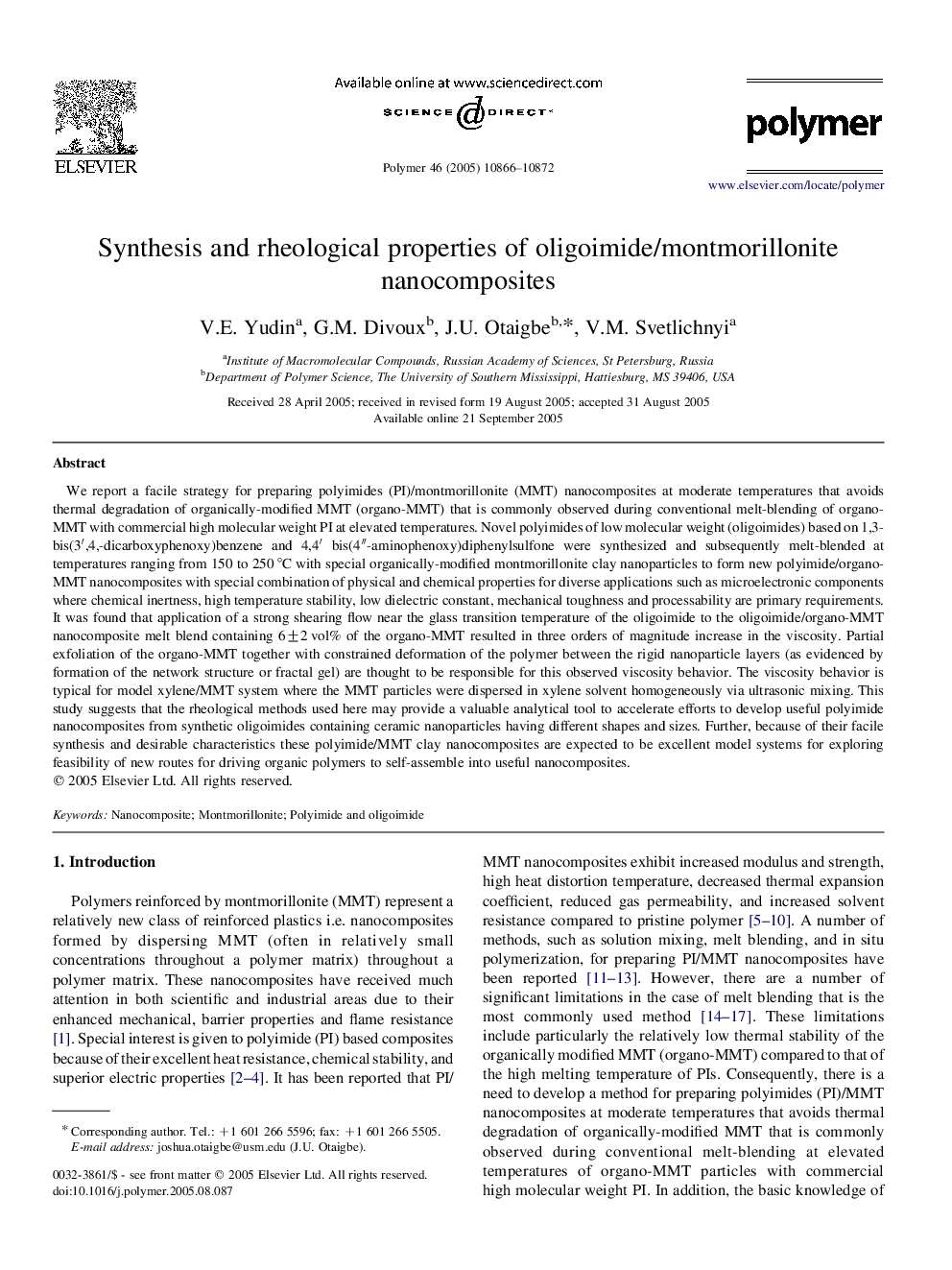| Article ID | Journal | Published Year | Pages | File Type |
|---|---|---|---|---|
| 5186859 | Polymer | 2005 | 7 Pages |
We report a facile strategy for preparing polyimides (PI)/montmorillonite (MMT) nanocomposites at moderate temperatures that avoids thermal degradation of organically-modified MMT (organo-MMT) that is commonly observed during conventional melt-blending of organo-MMT with commercial high molecular weight PI at elevated temperatures. Novel polyimides of low molecular weight (oligoimides) based on 1,3-bis(3â²,4,-dicarboxyphenoxy)benzene and 4,4â² bis(4â³-aminophenoxy)diphenylsulfone were synthesized and subsequently melt-blended at temperatures ranging from 150 to 250 °C with special organically-modified montmorillonite clay nanoparticles to form new polyimide/organo-MMT nanocomposites with special combination of physical and chemical properties for diverse applications such as microelectronic components where chemical inertness, high temperature stability, low dielectric constant, mechanical toughness and processability are primary requirements. It was found that application of a strong shearing flow near the glass transition temperature of the oligoimide to the oligoimide/organo-MMT nanocomposite melt blend containing 6±2 vol% of the organo-MMT resulted in three orders of magnitude increase in the viscosity. Partial exfoliation of the organo-MMT together with constrained deformation of the polymer between the rigid nanoparticle layers (as evidenced by formation of the network structure or fractal gel) are thought to be responsible for this observed viscosity behavior. The viscosity behavior is typical for model xylene/MMT system where the MMT particles were dispersed in xylene solvent homogeneously via ultrasonic mixing. This study suggests that the rheological methods used here may provide a valuable analytical tool to accelerate efforts to develop useful polyimide nanocomposites from synthetic oligoimides containing ceramic nanoparticles having different shapes and sizes. Further, because of their facile synthesis and desirable characteristics these polyimide/MMT clay nanocomposites are expected to be excellent model systems for exploring feasibility of new routes for driving organic polymers to self-assemble into useful nanocomposites.
